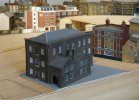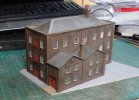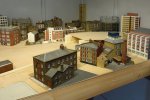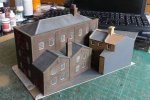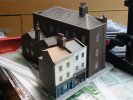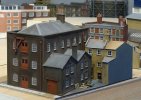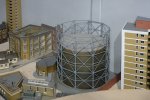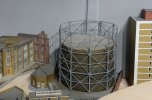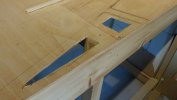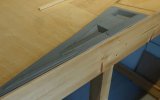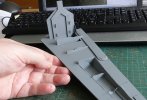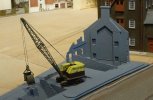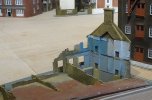I'm part way through making a, hopefully Victorian style, warehouse for the next structure along (from the vinegar brewery) in front of the viaduct. I've test placed it on the layout to check it all goes together okay (pic below). The walls aren't attached (hence the gaps) as doors need to be made and fitted. Then they can be glued to the carcass. Finally, details, like the hoist jib, down rain pipes, chimney pots, etc., can be made and added.
